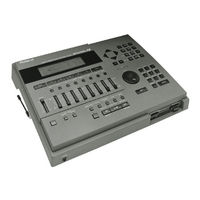Roland Studio M MV-30 MIDI Workstation Manuals
Manuals and User Guides for Roland Studio M MV-30 MIDI Workstation. We have 2 Roland Studio M MV-30 MIDI Workstation manuals available for free PDF download: Owner's Manual, Quick Start Manual
Roland Studio M MV-30 Owner's Manual (261 pages)
Music Production System
Brand: Roland
|
Category: Music Equipment
|
Size: 11 MB
Table of Contents
Advertisement
Roland Studio M MV-30 Quick Start Manual (44 pages)
Brand: Roland
|
Category: Recording Equipment
|
Size: 5 MB

